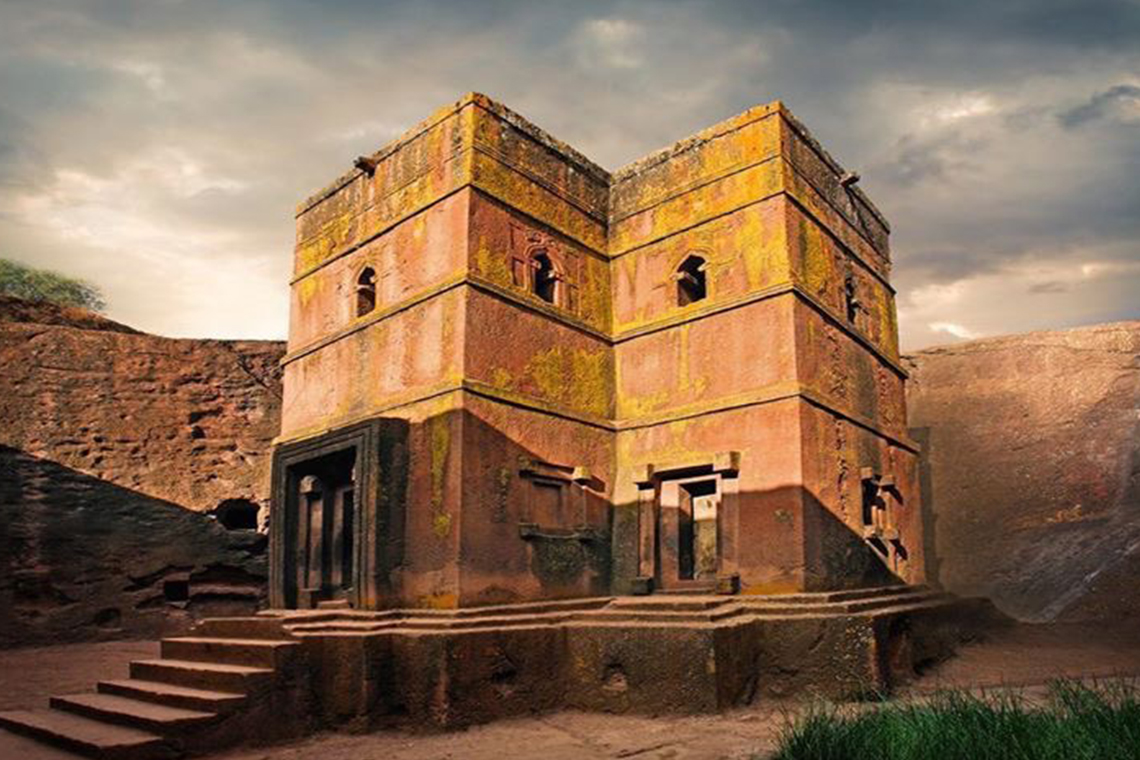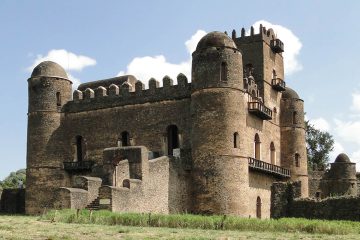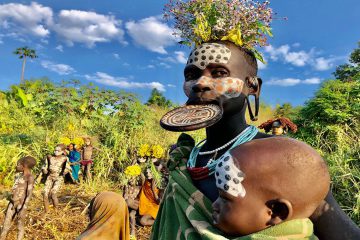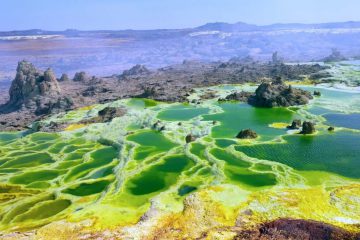Day 1: Departure
Day 2 Fly to Bahir Dar
Day 3 Bahir Dar
Early in the morning we travel to the Tississat, or Blue Nile, Falls, located about thirty kilometers from Lake Tana. amazing to see the Blue Nile pouring over the fern-fringed lip to be channeled into the incredibly narrow gorges on its journey to Khartoum in Sudan. We take a gentle walk to the falls (approx two hours round trip) before stopping to admire them. From here we head back to the river for a short boat ride to meet the vehicle. (N.B. A shorter visit to the falls can be arranged for those who don’t want such a long walk). We then return to Bahir Dar for lunch and explore the town. We may choose to visit the local market or watch the activity in and around the lake where the main means of transport is the traditional boats made of bundled papyrus known as Tankwa
Day 4 Drive to Gondar
Day 5 Drive to Semien Mountain and Trek
Day 6 Fly to Lalibela
probably one of the most fascinating places not only in Ethiopia but also in the world. In fact it was included in the World Heritage list by the UNESCO. Lalibela is one of Ethiopia’s holiest cities, second only to Axum, and is a center of pilgrimage for much of the country. Unlike Aksum, the population of Lalibela is almost completely Ethiopian Orthodox Christian. Lalibela was intended to be a New Jerusalem in response to the capture of Jerusalem by Muslims in 1187, and many of its historic buildings take their name and layout from buildings in Jerusalem b/n the 12th and 13thC. There are 11 churches, assembled in 3 groups.
Day 7 Lalibela - Excursion Mule trek to Ashatan Maryam
In the morning we enjoy an optional adventurous mule journey to visit Ashetan Maryam (St Mary), built on a ridge with excellent views over the surrounding countryside. The trip takes approximately 4 hours (round trip) and will start early to avoid the heat. We will ride the mules up the mountain for approximately an hour, before hiking the rest of the way up the mountain to the church. After visiting the church we will walk back down to the village on slippery mountain paths. In the afternoon we visit another cluster of churches that include the churches of Bete Gabriel and Rafael, Merkorous, Emanuel and Abba Libanos. Bete Emanuel is the best in this group and exceptionally carved with unique Axumite building features, such as the indentations on the walls, symbols of the multi-storey building taken from the stelae of Axum, monkey heads and false windows. The rest of the day is spent absorbing the atmosphere of this extraordinary town with its Tukul or round houses. Made as two-storey buildings, they are unusual in Ethiopia.





Tour Reviews
There are no reviews yet.
Leave a Review